
Apstraktne emocije iz kamenog doba snimljene zvukom.
Minóy or Stanley Keith Bowsza (October 30, 1951 - March 19, 2010) was a prolificAmerican DIY sound artist, a home taper active in mail-art. He has created numerous releases on cassettes and gained a high rank position in cassette culture spheres. If you are still not familiar with this unique persona I suggest you to read this and this articles. Or get a fresh book/cassette/cd here.
Since I heard The Dying Man, a collaboration release made by David Prescott and himself, I got hooked and after a quite of time that passed - I'm still under the spell of the magician of his own, the spell that holds me with empathy identified with endless embracing.
Plain Wrap Purgatory is a droning sound collage with eerie vocals, typical Minoy-ish. Intense, licentious, emotional, abstract... He is sharing with us his darkest secrets but he is so cold, so indifferent.
What is he doing? Is this real? It seems he is so into his musical rite, he transforms his creature to some unknown far above dimensions... stahlfabrik.blogspot.hr/2014/08/minoy-plain-wrap-purgatory-sound-of-pig.html
Minóy edited by Joseph Nechvatal
download book
Minóy is a rescue operation with several life rafts. Minóy-the-book provides an introduction and overview to the important noise music artist Minóy — the pseudonym of American electronic art musician and sound artist Stanley Keith Bowsza (1951-2010). Minóy’s audio compositions, often conjuring up an enigmatic world of almost dreadful depth, earned him a key position in the homemade independent cassette culture scene of the 1980s.
Minóy-the-CD+cassette+mp3s (available HERE) makes available nine of Minóy’s audio compositions that span the years 1985 to 1993. These were drawn from recently discovered archival material and selected by the editor and artistic director of the project, Joseph Nechvatal, in collaboration with composer Phillip B. Klingler (PBK). Klingler (co-producer and sound engineer) houses the Minóy archive and has re-mastered the tracks, most of which have never been heard before (it was thought that Minóy stopped recording in 1992).
Minóy-the-book contains two written monograms of Minóy, one by close friend Amber Sabri and one by artist and art theoretician Joseph Nechvatal. There are three additional essays by Nechvatal, the first of which, “The Obscurity of Minóy,” recounts the history of the recovery of the audio material from obscurity. In the subsequent essays (“The Aesthetics of an Obscure Monster Sacré” and “Hyper Noise Aesthetics”), Nechvatal reflects on the artistic benefits of obscurity and situates Minóy’s deep droning palimpsest soundscapes within an original aesthetic-theoretical context of an obscure monster sacré, and also examines Minóy’s legacy in terms of current aesthetic responses to the surveillance state, couching Minóy’s mysterious and excessive compositions in terms of a general art of noise. In total, Minóy’s work undergoes a critical intricacy in terms of a contemporary art practice engaged in the fragile balance between production of, and resistance to, perceptibility. Nechvatal brings a subversive reading to Minóy’s work by presenting it as a form of hyper-noise artistic gazing, based in the flipping of figure and ground. The book also contains sixty black and white portrait images from the Minóy as Haint as King Lear series that photographer Maya Eidolon (Amber Sabri) created before his death in collaboration with Minóy (then known as Haint) and Stuart Hass (Minóy’s lifetime partner).
- Listen to a selection of Minoy tapes and hear a special spoken response by Minoy to his favorite piece of equipment ( thanks to Tom Furgas and Greg Mathieson).Hear more Minoy material at the downloads in the sidebar ( grey box ) below.
“Bleak Counterpoint” was a collaboration between Minoy and east coast electronics musician David Prescott. This one came out in 1987.Most of the tapes I received from Minoy did not feature paper covers but were simply hand inscribed in their plastic shells.To the left above, the cover for “The Flavor Of Acid On Ice” and to the right, the plastic shell which had been coated with an odd resin of adhesive material that was hand colored. 1987. That was a gift to me from Jack Jordan back then.
Stanley Keith Bowsza, also known as Minoy died in 2010. I just found this out recently when notified by Philip B. Klingler on facebook Here was the infoThe information also got posted by his long time partner, Stuart, hereThe name Minoy is supposed the have an accent above the “O”. You will see it in the photos of the tapes. I could not get my text program to do it though.I tried to remember when I first heard of Minoy. I thought it had been 1986 but it was actually later, probably early in 1988, maybe 1987. He had blindly sent a copy of “Sodomy In The Supreme Court Lobby” to KKUP for my radio show. No letter, no accompanying info that I recall. I think there was some handwritten communications on the tape cover itself or on a small piece of paper tucked into the plastic cassette shell.I don’t think I played it on the show that same day because I was afraid there might be obscenity or foolish, meaningless noise. But not long after I immersed myself in his strange world of sound and came to see how unique it was.Now, by 1988 there had been a lot of noise, electronics, industrial and more in the home recording underground but here was something a little different and certainly as challenging as anything I’d come across in my aural travels.My friend Jack Jordan exposed me to many Minoy tapes in about 1988 and we even did a radio show together where we mixed about 60 of his tapes into a long set. Jack was a huge fan and champion of Minoy right from the start. Hear the show hereNot long after, I wrote Minoy and we started trading tapes and he would send his latest work. I never even knew his name then.The period in the late 1980s seemed the most productive from where I sat and the legend of Minoy grew. To look at, he seemed rather scary or maybe angry. To communicate with though he was anything but. He was always a gentleman to me and although I wouldn’t call him a prolific letter writer he would jot a sentence or two in a communique and add a tape or two.I didn’t like all the Minoy I heard. I wasn’t big on the growling, meandering vocals he did. It was uncomfortable to me. His best work to me was the droning collage electronics that would sometimes abruptly stop, poke around in some weird found sound space and then continue on. One of my favorite tapes was “Tennessee Dance Mix” an all out noise attack of torrential waves of sound. I once sat transfixed in my car for almost a half an hour after I got home because I could simply not leave my car until it was over.
Even in his most outward days he still seemed reclusive though. When he made the front cover of Hal McGee’s Electronic Cottage Magazine I was sort of shocked. You mean, he actually responded to an interview? He didn’t bite somebody’s head off? He sat still for this? At one point in this article he even talked about people he wanted to collaborate with. And one of them was me! Ah, but we never did.That ranks up there with not going to see The Beatles at Candlestick Park in 1966, or Hendrix and The Doors in San Jose in 1968 as lifetime regrets.
When I began The Living Archive in 2009 I knew I wanted Minoy to be the first Artist Spotlight. He is an iconic figure to me…and maybe larger than life because I didn’t meet him in person. I had hoped somehow that he would see the article, the tribute to him, and come forward from the shadows. Maybe he had a bunch of recordings that he had done in the interim that would come to light now.But no. He died in 2010 leaving a large legacy of material for us to go through and cherish.If you haven’t heard his sounds I hope you download or stream some of what is offered here and at least give them a bit of a listen. It isn’t for everyone. But the power of his music is hard to deny.
I would like to thank all of the people who helped with this tribute page to Stanley Keith Bowsza aka Minoy: Hal McGee, Damian Bisciglia, Philip B. Klingler, Jack Jordan, Tom Furgas, Greg Mathieson, Mike Honeycutt and everyone who wrote comments. Thanks and condolences also to his long time partner, Stuart for letting the world know about his passing.Minoy was certainly one of the legends of the sociological/musical period we call Cassette Culture. Mail artist, noise maker, digital visual artist and enigma.My 2009 Artist Spotlight on Minoy here
Bret HartI reviewed several Minoy releases during the 80’s. I was impressed by the startling sonic violence on the works I heard. The man sounded as angry as his cassette images suggested he might be. There was a depth of tone and texture that was, at the time, nearly unmatched. Disturbing and evocative, like much in the electronic realm can be. He was one of a kind.Zan HoffmanDon’t wanna “like” this but I must say for those of you who only hear but never wrote Mr. M – he was a gigantic personality! He was keenly aware of modern & contemporary arts and was wildly artistic himself. His audio arts were obnoxiously ahead of there time & it took years for all this to make sense. Surely someone should polish a Wikipedia entry for the boy!Tom FurgasAs an avid home-taper and trader back in the ’80’s I was naturally inclined to network with just about anyone who was interested in trading tapes and exchanging information. So it was natural that I would hear from one of the greats of home-taping; Minoy. He and I traded tapes and letters for a short while in the late ’80’s, and I even telephoned him once. (I specifically remember one statement he made; “Minoy is a myth!”) His music had (and still has) the power and originality of the greatest electronic composers of the 20th century; I would rank him with such luminaries as Stockhausen and Xenakis! And this was done with very minimal equipment, I am given to understand. Just a Sony Walkman recorder, shortwave radio, echo unit, and a few other bits of equipment. Minoy was never one to be discouraged because he didn’t have access to state-of-the-art equipment. Many of his works are 30-minute aural workouts, but always continually absorbing and never repetitious or boring. He didn’t believe in making a lot of obnoxious noise; his music was indeed “music”, but challenging and original. He had a lot of personal demons and physical illness that often made life sheer Hell for him, but he still created brilliant music and shared it with the listeners and home-tapers who were lucky enough to get to know him. His taped music is his legacy, and we are fortunate to have it to listen to now that he is gone.Al Margolis
Well serious bummer about Minoy, who i never met and had not been in contact with for many years – i would often here from Zan or Jack Jordan about him or be asked about him – but i no longer knew nothing. And to be honest i cannot remember exactly what i first heard of Minoy’s. looking at an old SOP catalog i see i had a Minoy tack on SOP 15 – Scary World compilation. Which means we must have been in touch by 1985 at the latest. SOP released about 15 of his tapes – as Minoy or as his various collaborations. I think perhaps my favorite Minoy tape is Spaceshot – by PM – Minoy and Dave Prescott – the beginning in fact is brilliant – just Minoy speaking and Dave’s synth..utterly great. And i heard Minoy’s work before i had ever heard Stockhausen’s Hymnen – so that my take on hearing Hymnen was that it fit in this continuum …not the other way around!!!And i have some very cool Minoy drawings hanging in our house…we’ll miss ya….
Bryan BakerI only have a few tapes and I’m not sure exactly what. I’ve come across “that which momentously declares itself not to be I and yet must be. It could be nothing else.” It has an art collage of print clippings, foil, and string stuck with melted plastic on the front of the case.Roger MoneymakerAll I can do is shake my head at the passage of time an friends. MINOY was the MAD MONSTA, the Woolly Brain, one of a kind- and a fellow tennesseean! In these end times art is lost in the storm of information. Minoy was a storm of tireless creation. As an artist he found no peace in rest…….now may he Rest in peace. Om nama shivaya.Jack JordanMinoy – a legend lost too soon. But you will continue to be emphatically and vigorously alive each time I play your music – which will live on indefinitely and be revered by those adventurous musical souls yet to discover your genius.Philip B. KlinglerI contacted Minoy because of some reviews I’d read of his tapes in Option Magazine. I purchased some of them from him in 1987, sent him a money order. Even though I considered myself to be knowledgeable in music, I had a huge collection of albums, nothing quite prepared me for the unique sound world of Minoy. While living in California I would go record hunting in L.A. and one day I found Ron Lessard’s Due Process “RRRadio Six” album, that LP turned my head around, and then to follow it up with Minoy it was easy to see two distinctly different approaches to abstract sound. Where Ron’s work was playful and dadaist, Minoy’s bedroom isolationist approach produced something that seemed otherworldly, spiritual and more like paintings, which was my own background. I took Minoy’s approach as my own model.Collaborating with him was an overwhelming experience, but I don’t think he trusted me at first, he asked to keep our first collaborations anonymous and we created together a “hoax” project called Disco Splendor. The aesthetic that we determined for this project, that of repetitious, banal, meaningless noise was a kind of quest to find out just what “flew” in the cassette underground, what would be denounced as ridiculous or dreadful in this new world? In those days there was no blueprint for what any of us were doing, there had certainly been assimilations in rock music of the experiments of Stockhausen, Pierre Henry, or John Cage, and we knew of those things, but what we were doing with noise had not been tried to such an extreme. There was no internet and it was very difficult to find out what others were doing concurrently that might be similar to our own. (and when I say “we” I am talking about a number of artists, a certain zeitgeist happening simultaneously in different parts of the world) Ultimately, Disco Splendor proved nothing if not that the ears and minds of the artists and fans of experimental music were wide open to new possibilities, and even the most excessive sorts of approaches. So, the project was put behind us and we worked from then on as Minoy/PBK.There is a photo from 1988 of my studio wall in California where I have a cork board attached, and pinned on it are pictures of some of my heroes, there’s Jiddu Krishnamurti, Charlie Parker, Max Beckmann, William S. Burroughs… and Minoy. That is how highly I thought of him.Minoy had the largest collection of homemade experimental tapes I have ever seen, this was in 1987. It was immense, he had shelves covering the walls of his room. When he showed the tape collection to me on a couple of occasions, I glanced about and noticed his messy bed with blank tapes and papers strewn about, a tape recorder with hand-held microphone. He told me he did most of his soundwork late at night in his bed.During a fevered six year period, between 1986 and 1992, Minoy created hundreds of unique audio works. He defined the “mail collaborator”, which suited his personality and phobias- he was an agoraphobic and didn’t like to travel, could not drive a car. He was addicted to his mailbox and would receive stacks of mail. On the days that I spent with him the mail carrier would bring his mail bound in twine there was so much of it. He adopted the name “No Mail On Sundays” for his sound project with Damian Bisciglia, a reference to his postal addiction.We performed at the University of California, San Bernardino, the now infamous “Devil Music” concert, and I had assured Minoy before that everything would be fine, coaxed him to do it, told him people would dig it. In retrospect, I think that performance took a toll on him. Even for all the validation Minoy did receive, it was events like this that made him acutely aware of how unacceptable and misunderstood his creative works were to society at large. He was a non-conformist who wanted love.Throughout the 2000’s we kept waiting for him to surface, thought to ourselves he is somewhere out there observing all that’s going on, maybe he’s working under a pseudonym. But the truth is very far from that: he quit making music. Nevertheless, the things he did record represent, to me, a pinnacle, they are some of the most remarkably beautiful and imaginative work-of-art albums released on cassette in the 1980’s. We will save what of it we can and I hope it inspires future generations as much as it did me.Little FyodorI am very saddened to hear of Minoy’s passing. I very much admired him for the distinctive quality of the sound of his labyrinthian and highly textured personal brand of “noise”. Lots of people made experimental and ambient noise back in the cassette days – and still do! – but I don’t know if I’ve ever heard anyone else approach the type of distinctive sound that Minoy made his signature, which I consider a great and wonderful feat of his. My most direct interaction with him was via his involvement with the Walls Of Genius compilation tape, Madness Lives. His contribution was called “Guadalajara Dry Heaves”, which, for most its 4 1/2 minutes paired his usual unique soundscape with intermittent interruptions from seemingly random sounds and voices. Right when one of the voices says “Guadalajara”, the soundscape quickly fades away to be replaced by – you guessed it – the sound of someone suffering through the throes of the remainder of the piece’s title! This, in turn (before, thankfully, too long!) , is replaced by the sound of a media talking head announcing the release of “We Are the World”! On which note the piece abruptly ends. Yes, we got it! It was a perfect contribution for Madness Lives since WoG’s twofold goal for the comp was to simultaneously represent a genuine cross section of the cassette “scene” as it were while simultaneously bringing out the more, ahem, wacky, you might say, side of said scene, since, after all, that’s what WE were into. Minoy did a fabulous job of being Minoy yet fulfilling the theme of the comp as well! Ah well, it’s but a small data point of an interesting person and life amidst a vast sea of earthly culture amidst of much vaster and quite spacious universe. Death, as the idly swimming fish near the beginning Monty Python’s “Meaning of Life” noted, makes you think. My hats off to you Minoy, and my condolences to all who knew him a whole lot better than did I. - livingarchive.doncampau.com/lost_and_forgotten/minoy-the-passing-of-a-legend


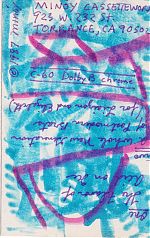
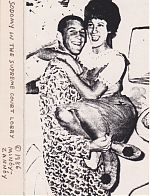
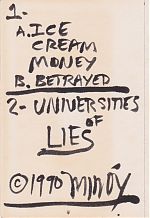
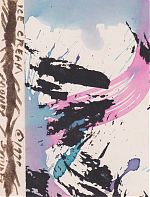

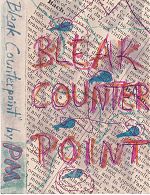

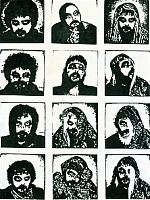


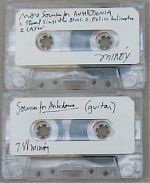




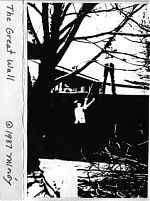


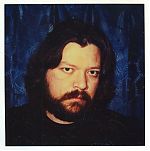
Nema komentara:
Objavi komentar